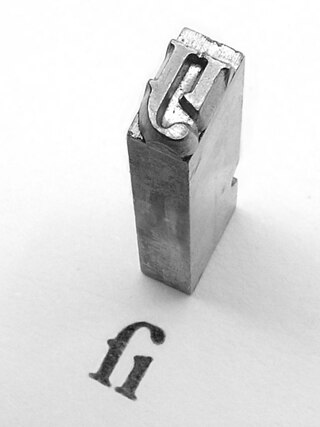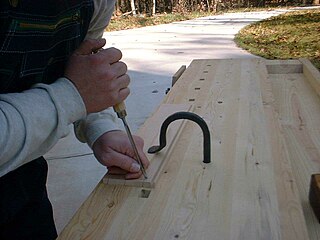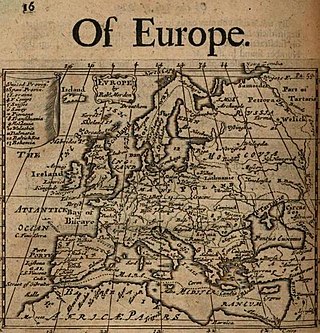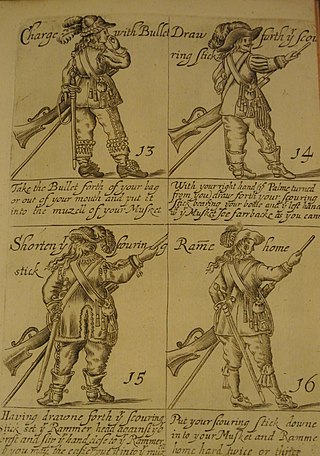
In printing, type metal refers to the metal alloys used in traditional typefounding and hot metal typesetting. Historically, type metal was an alloy of lead, tin and antimony in different proportions depending on the application, be it individual character mechanical casting for hand setting, mechanical line casting or individual character mechanical typesetting and stereo plate casting. The proportions used are in the range: lead 50‒86%, antimony 11‒30% and tin 3‒20%. Antimony and tin are added to lead for durability while reducing the difference between the coefficients of expansion of the matrix and the alloy. Apart from durability, the general requirements for type-metal are that it should produce a true and sharp cast, and retain correct dimensions and form after cooling down. It should also be easy to cast, at reasonable low melting temperature, iron should not dissolve in the molten metal, and mould and nozzles should stay clean and easy to maintain. Today, Monotype machines can utilize a wide range of different alloys. Mechanical linecasting equipment uses alloys that are close to eutectic.

Bunhill Fields is a former burial ground in central London, in the London Borough of Islington, just north of the City of London. What remains is about 1.6 hectares in extent and the bulk of the site is a public garden maintained by the City of London Corporation.
This article contains information about the literary events and publications of 1627.
An em is a unit in the field of typography, equal to the currently specified point size. For example, one em in a 16-point typeface is 16 points. Therefore, this unit is the same for all typefaces at a given point size.

A printer's devil was a young apprentice in a printing establishment who performed a number of tasks, such as mixing tubs of ink and fetching type. Notable writers including Benjamin Franklin, Walt Whitman, Ambrose Bierce, Bret Harte, and Mark Twain served as printer's devils in their youth.

A holdfast or hold fast is a form of temporary clamp used to hold a workpiece firmly to the top or side of a wooden workbench or the top of an anvil.

Paternoster Row was a street in the City of London that was a centre of the London publishing trade, with booksellers operating from the street. Paternoster Row was described as "almost synonymous" with the book trade. It was part of an area called St Paul's Churchyard.
Events from the year 1631 in England.

Robert Morden was an English bookseller, publisher, and mapmaker, globemaker and engraver. He was among the first successful commercial map makers.

Emery Molyneux was an English Elizabethan maker of globes, mathematical instruments and ordnance. His terrestrial and celestial globes, first published in 1592, were the first to be made in England and the first to be made by an Englishman.
Robert Crosse (1606–1683) was an English puritan theologian.
Greenvile Collins was an officer of the Royal Navy and prominent hydrographer, who compiled Great Britain's Coasting Pilot, the first survey of the country's coast undertaken by a Briton.

John Foster was an early American engraver and printer who lived in Boston in the Massachusetts Bay Colony when the colony was still in its infancy. He is credited with producing the first printed image in British colonial America, from a woodcut engraving of the Puritan minister Richard Mather. He also printed the first map to appear in the colonies. Foster graduated from Harvard University, but was a self-taught pioneer in American printmaking in woodcut, and also learned the art of typography from the Boston printer Marmaduke Johnson. He subsequently printed many works by prominent religious figures of the day in Massachusetts, and for a few years printed and published an annual almanac. His woodcut engravings were also used for the printing of official seals of the Massachusetts Bay Colony used by the provincial government.
William Savage (1770–1843) was an English printer, engraver, draughtsman and author of several works about printing.
In typography, a quad was a metal spacer used in letterpress typesetting. The term was later adopted as the generic name for two common sizes of spaces in typography, regardless of the form of typesetting used. An em quad is a space that is one em wide; as wide as the height of the font. An en quad is a space that is one en wide: half the width of an em quad.
Thomas Crosby (1683–1751) was an English writer, author of History of the English Baptists.

Thomas Jenner was an English author, engraver, and publisher in London. He kept from 1624 a print-shop by the south entrance of the Royal Exchange; it was recommended by John Evelyn to Samuel Pepys.
John Seller (1632–1697) was an English compiler, publisher, and seller of maps, charts, and geographical books. From 1671 he was hydrographer to the King.

Christoffel van Dijck was a German-born Dutch punchcutter and typefounder, who cut punches and operated a foundry for casting metal type. Van Dijck's type was widely used at a time when Amsterdam had become a major centre of world printing.

Philip Lea was an English cartographer, globemaker, instrument maker, and publisher. He was a prolific printer and reviser of maps, frequently collaborating with other contemporary mapmakers including Herman Moll, Robert Morden, John Ogilby, and John Seller.













